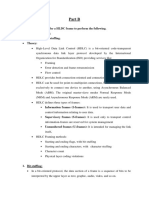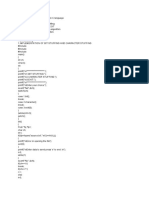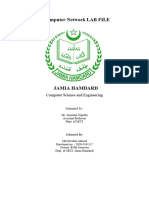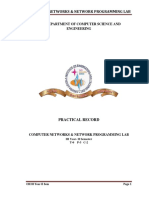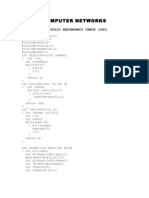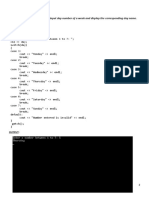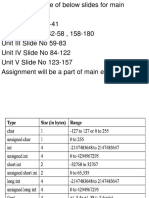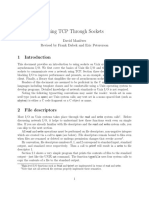0% found this document useful (0 votes)
95 views19 pagesNotes For Compiler Design
The document is a lab file submitted by R.K. Yadav for a computer networks course. It contains details of 8 experiments conducted on various computer network algorithms including finding the class of an IP address, implementing stop and wait, sliding window, and distance vector routing algorithms, and shortest path algorithms like Dijkstra's, Bellman-Ford and Floyd-Warshall. For each experiment, it lists the aim, code, inputs and outputs.
Uploaded by
chirag yadavCopyright
© © All Rights Reserved
We take content rights seriously. If you suspect this is your content, claim it here.
Available Formats
Download as TXT, PDF, TXT or read online on Scribd
0% found this document useful (0 votes)
95 views19 pagesNotes For Compiler Design
The document is a lab file submitted by R.K. Yadav for a computer networks course. It contains details of 8 experiments conducted on various computer network algorithms including finding the class of an IP address, implementing stop and wait, sliding window, and distance vector routing algorithms, and shortest path algorithms like Dijkstra's, Bellman-Ford and Floyd-Warshall. For each experiment, it lists the aim, code, inputs and outputs.
Uploaded by
chirag yadavCopyright
© © All Rights Reserved
We take content rights seriously. If you suspect this is your content, claim it here.
Available Formats
Download as TXT, PDF, TXT or read online on Scribd
/ 19






